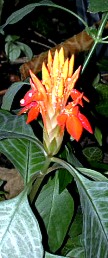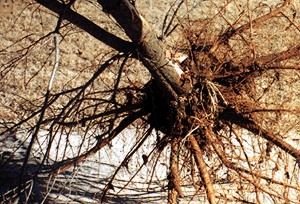 |
|
||
|
In my years of research, teaching, consulting and travel, nursery production practices are a mix of "the good news and the bad news." For field production, the good news is: Trees and shrubs grown in good soil with good care, typically have better foliage density and color, far superior stem diameter and taper from soil line to the top with more dense and natural branching, and, until harvested, have good root systems. The bad news is: Harvesting is slow, labor intensive, is practical only when the plants are dormant, and requires an extensive investment in machinery and labor. And, worst of all, 95% or more of the plant roots are left in the field even though the soil balls are huge, heavy and cumbersome. For production in containers, the good news is: Plants are mobile and easily moved. The entire root system is confined to the volume of the container, and, if done correctly, no roots are lost at harvest. Root tips are active and quickly extend into the surrounding soil following planting in the landscape. The bad news is: Plant roots are damaged and some are killed by heating of the sidewall of the container even when the air temperatures are moderate. Plant roots can be damaged and sometimes killed by winter's cold. Containers blow over. Trees and most large shrubs are tall and spindly. Branching of trees is poor and sparse. Staking is often required, both in the nursery and after planting in the landscape, because trees have poor stem diameter, taper and strength. Roots in conventional containers are deformed and intertwined, and often the plants is root bound, Deformed roots will always be in that condition. Using toxic levels of copper on the inside of the containers creates far more problems than it solves. For pot-in-pot production the good news is: Plants do not blow over, and the roots are protected from summer's heat and winter's cold. The bad news is: Roots are still in conventional containers with all of the spiralling and root deformities, and the longer the plants re grown, the more severe the problem. Using copper-treated pots for only a few crop cycles pollutes the surrounding soil with copper so badly as to make it unsuitable for other crops in the future. Roots often escape from the inside pot and find their way to the holes in the socket pot so that harvesting is difficult if not impossible, and the impact of the root loss on the plant can be as severe as with B&B. The cost of setting up such a system is very high, and it only works on soils that drain well without the additional large expense of sub-drains.
|
|||
